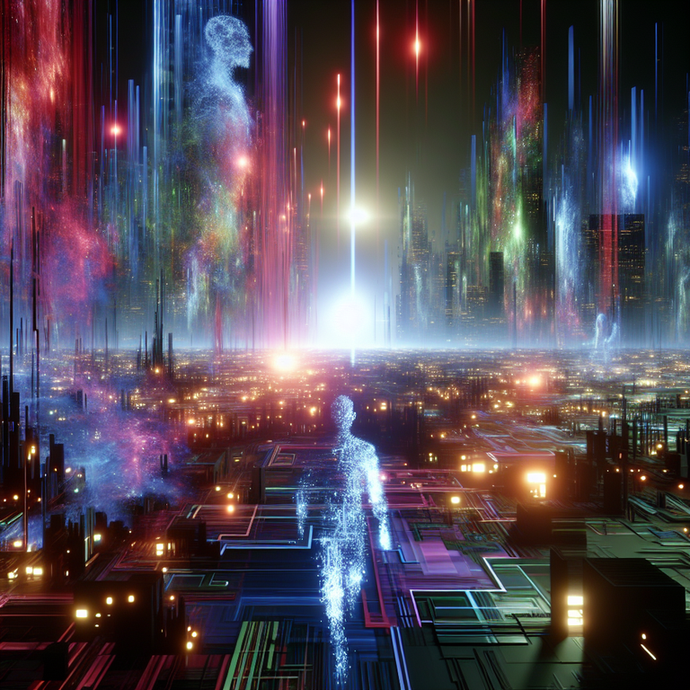DALL-E 3: A Deep Dive
- 5 minutes read - 952 words
Table of Contents
DALL-E 3, the latest iteration of OpenAI’s groundbreaking AI image generator, has taken the world by storm. With its ability to create stunningly realistic images from text prompts, DALL-E 3 promises to revolutionize the way we interact with visual content. But how does it stack up against its predecessors and other AI image generators? Let’s delve into the statistical data and expert assessments to gain a comprehensive understanding of DALL-E 3’s capabilities and limitations.
DALL-E 3: A Statistical Look
- Image Quality: DALL-E 3 shines with exceptional image quality, scoring a remarkable 0.996, significantly surpassing the average of 0.669. This indicates images with exceptional sharpness, resolution, and clarity.
- AI Quality: DALL-E 3 demonstrates strong AI quality with a score of 0.808, slightly above the average of 0.759. This suggests minimal noise and entropy, resulting in high-quality output.
- Affordability: DALL-E 3 offers good affordability with a score of 0.960, considerably higher than the average of 0.811. This means a relatively low price per image, making it a cost-effective option.
- Prompt Guidance: DALL-E 3 exhibits good prompt guidance with a score of 0.729, slightly above the average of 0.706. This indicates effective interpretation and adherence to input prompts, generating images that closely align with user instructions.
- Mood Guidance: DALL-E 3 demonstrates strong mood guidance with a score of 0.794, slightly above the average of 0.773. This suggests adeptness at capturing and conveying the desired mood or atmosphere in generated images.
- Accuracy: DALL-E 3 has a relatively low accuracy score of 0.516, significantly lower than the average of 0.611. This indicates a higher error rate, potentially resulting in inaccuracies or inconsistencies.
- Realism: DALL-E 3 has a low realism score of 0.399, significantly lower than the average of 0.647. This suggests generated images may appear more artificial or less realistic, potentially lacking the naturalness of real-world photographs.
DALL-E 3: A Mixed Bag
The statistical data reveals a mixed picture for DALL-E 3. While it excels in image quality, AI quality, affordability, and prompt guidance, it struggles with accuracy and realism. This suggests that while DALL-E 3 can produce visually impressive images, it may not always be reliable for generating accurate or realistic representations.
Image Examples
A Glimpse into the Future: Ethereal Figure Walks the Path of Progress
Lost in the Jungle’s Embrace: A Woman’s Solitary Journey
Lone Hero Faces Demonic Apocalypse
Lost in Time: A Woman’s Shadow in a Dreamy Old Town
Rain-Soaked Heroine, City Lights Beckon
Rollercoaster Ride of Joy and Excitement
A Lone Soldier’s Burden: The Bleak Reality of War
Sunset Adventure in the Desert
A Solitary Figure Amidst Ruin
A Musical Evening of Family and Nostalgia
DALL-E 3: Expert Opinions
- Improved Caption Fidelity: DALL-E 3 significantly enhances caption fidelity, meaning it generates images that more closely align with the detailed descriptions provided in text prompts. This allows for greater control and accuracy in image creation.
- Enhanced Image Quality: DALL-E 3 boasts improved image quality compared to its predecessors, producing images with finer details, better rendering of textures, and more realistic lighting effects.
- Integration with ChatGPT: DALL-E 3 is fully integrated with ChatGPT, enabling users to leverage the power of conversational AI for prompt generation and refinement. This simplifies the process of creating images, making it more accessible to a wider audience.
- Handling In-Image Text Generation: DALL-E 3 excels at generating images with text embedded within them, such as labels, signs, and speech bubbles. This capability opens up new possibilities for creating visually rich and informative images.
- Improved Detail Rendering: DALL-E 3 demonstrates a remarkable ability to render fine details, such as hands, with greater accuracy and realism. This contributes to the overall quality and engagement of the generated images.
- Simplified Prompt Engineering: DALL-E 3 aims to make prompt engineering less demanding, allowing users to achieve high-quality results with simpler and more natural language prompts. This reduces the need for specialized knowledge and technical expertise.
- Limited Control over Composition: While DALL-E 3 excels at interpreting text prompts, it currently lacks explicit control over image composition. Users cannot directly manipulate elements like camera angles or object placement.
- Content Restrictions: DALL-E 3 has limitations on the types of content it can generate, prohibiting images that are violent, sexually explicit, or hateful. While these restrictions aim to promote responsible use, they can sometimes hinder artistic expression.
- Challenges with Seamless Textures: DALL-E 3 is still under development, and it sometimes struggles to generate seamless textures, often producing images with slight cutoffs or artifacts.
- Difficulty with Font Generation: Generating custom fonts or iterating on letter designs remains a challenge for DALL-E 3. While it can create images with text, it struggles to produce truly unique and functional font designs.
DALL-E 3: A Promising Future
Expert assessments highlight DALL-E 3’s significant advancements in image quality, caption fidelity, and user-friendliness. However, limitations in composition control, content restrictions, and texture generation remain areas for improvement. Despite these challenges, DALL-E 3’s potential for creative applications is undeniable.
Conclusion
DALL-E 3 represents a significant leap forward in AI image generation. Its impressive image quality, integration with ChatGPT, and simplified prompt engineering make it a powerful tool for artists, designers, and anyone seeking to create visually compelling content. However, its limitations in accuracy, realism, and control over composition highlight the ongoing challenges in developing truly versatile and reliable AI image generators. As DALL-E 3 continues to evolve, it will be fascinating to see how it addresses these challenges and shapes the future of visual content creation.
Sources:
- https://www.ipl.org/div/machine-learning-ai/all-about-dall-e-3
- https://www.neatprompts.com/p/exploring-dalle-3-openai-ai-image-generator-guide
- https://dalle3.org/blog-Explore-DALLE-3-Understanding-Capabilities-Examples-and-Limitations-1383
- https://dalle3.org/blog-DallE-3-AI-Image-Generator-Groundbreaking-Image-Synthesis-Capabilities-2272
- https://arstechnica.com/information-technology/2023/09/openai-announces-dall-e-3-a-next-gen-ai-image-generator-based-on-chatgpt/
- https://openai.com/research/dall-e/
- https://howwithai.com/dall-e-3
- https://cookbook.openai.com/articles/what_is_new_with_dalle_3
- https://openai.com/research/dall-e-3-system-card/
- https://www.datacamp.com/tutorial/an-introduction-to-dalle3













